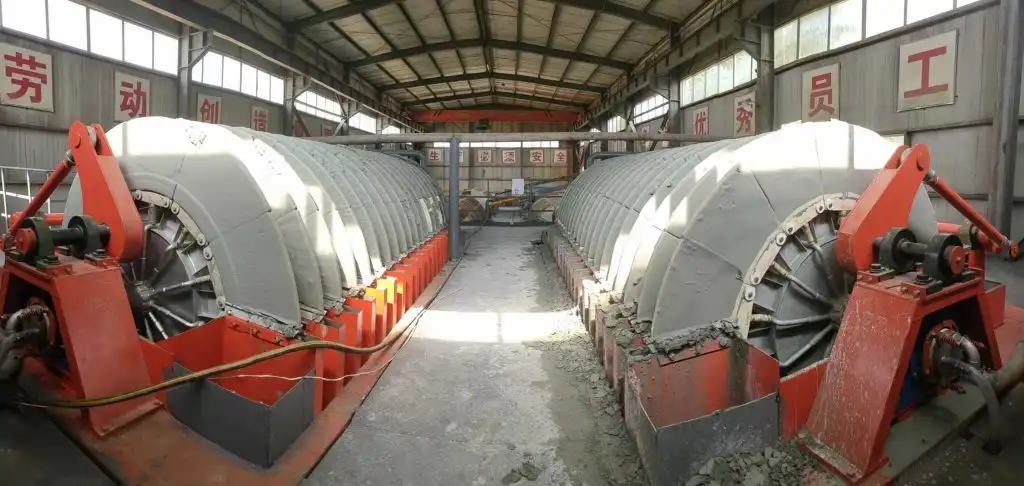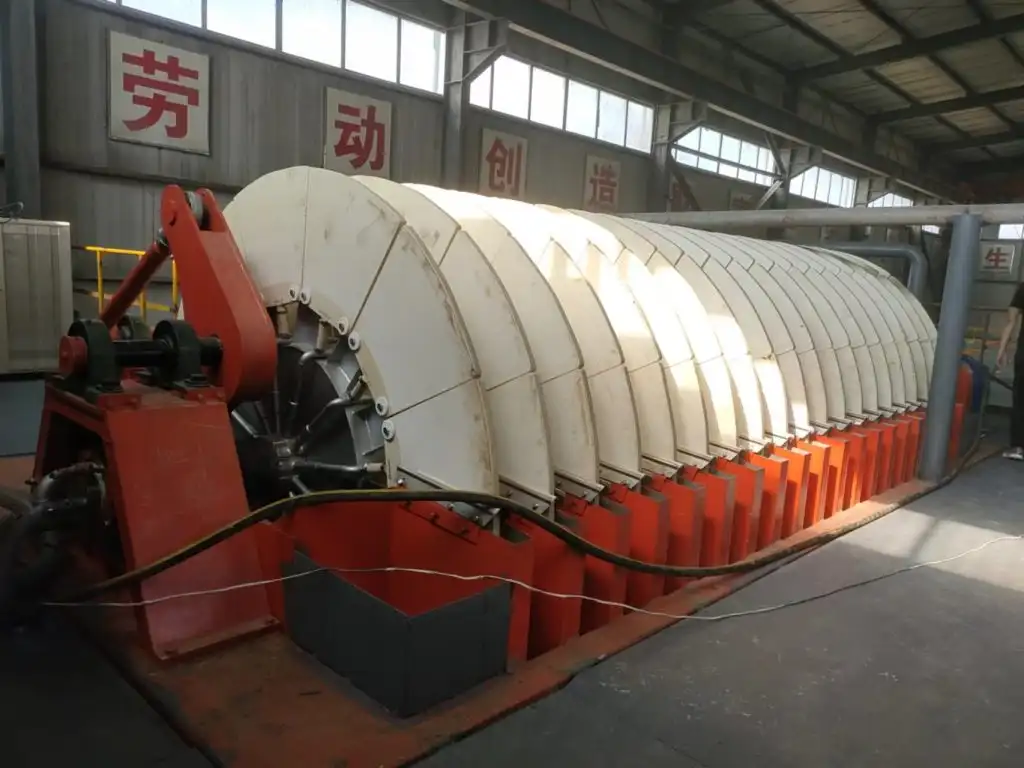
What Are Ceramic Filters and How Do They Work in Hazardous Waste Management?
These filters are high-efficiency systems made for dangerous waste streams. Built from materials like alumina, zirconia, or titania, they use exact pore designs and chemical tolerance to trap impurities reliably. This section looks at their operating rules, filtering processes, and how they differ from other waste treatment options.
Important Qualities of Ceramic Filters
Workers engineer ceramic filters using porous substances such as alumina, zirconia, or titania. These materials get heated intensely to form strong structures. These structures endure severe situations. Ceramic membranes possess excellent chemical and heat endurance. This allows them to resist tough cleaning techniques and work well in difficult settings. Their pore openings usually measure between 0.1 and 10 microns. This size lets them capture tiny matter including germs and floating solids.
Filtering Methods for Trapping Harmful Particles
Main filtering actions involve physical blocking, surface bonding, and sometimes germ-killing effects. Liquid moves through the ceramic’s small openings. These openings catch particles and microbes. Advanced versions might add silver layers or activated carbon parts. These additions kill bacteria and bond with chemical pollutants.
Differences from Other Filtering Technologies
Compared to plastic-based or reverse osmosis setups, ceramic filters show major benefits in sturdiness and upkeep. They remove germs and parasites from water very effectively. They can take out over 99% of E. coli and rotavirus. But they work less well against dissolved chemicals unless mixed with extra methods.
Yantai Hexin’s DF Ceramic Filters use modern ceramic substances. These ensure excellent filtering exactness while keeping shape under tough working situations.
Why Are Ceramic Filters Essential for Improving Safety in Hazardous Waste Treatment?
Safety matters most in hazardous waste work. Ceramic filters help greatly in lowering dangers. By stopping poisonous particles from entering nature and reducing worker contact, these filters support strict environmental and health rules. This part explains their role in pollution control, regulation following, and overall job safety.
Function in Stopping Environmental Harm
Ceramic filters act as first shields by catching harmful particles before they reach natural systems. Their tiny opening designs effectively separate dangerous solids from liquid waste flows. This lowers the chance of land and water pollution.
Help in Guarding Worker and Public Health
By reducing air particles and dirty outflows, ceramic filtering setups protect workers from health problems. These problems include breathing troubles or skin reactions. Ceramic filters can catch many dangerous things in water. They trap dirt, bacteria, and some parasites.
Meeting Official Standards
To reach worldwide safety marks like those from the EPA or NSF International, filtering systems must show high pollutant removal success. The EPA sets rules about filter performance. They check if filters can remove harmful items from water.
Yantai Hexin’s DF Series matches global quality marks through strict self-check steps. This ensures each unit meets rules before shipping.
How Do Ceramic Filters Affect the Environmental and Working Impact of Waste Management Systems?
Beyond safety, ceramic filters greatly improve the sustainability and cost savings of waste treatment. Their natural filtering process limits extra pollution. Meanwhile, their energy-smart build and long service life cut operating expenses. This section weighs their environmental gains and lasting money benefits against traditional filtering ways.
Lowering Extra Pollution Dangers
Unlike chemical treatments that might add new pollutants, ceramic filtering works through natural separation. This greatly reduces extra pollution threats.
Energy Savings and Working Life
Ceramic filters don’t require power to operate. They use gravity to push liquid through tiny holes. This makes them perfect for energy-aware jobs where sustainability matters. Also, their extended useful life means fewer replacements.
Cost Savings Over Extended Use
Though starting prices might exceed plastic options, ceramic filters prove cheaper over years because they need less upkeep and last longer.
Yantai Hexin’s DF Ceramic Filters need little maintenance. They also give high flow results. This makes them an economical pick across many fields.
What Things Influence Ceramic Filter Performance in Hazardous Waste Uses?
How well ceramic filters work depends on many factors. These include material makeup, pore arrangement, and resistance to severe conditions. Proper care and toughness also decide their lasting dependability in hazardous waste cases. This part examines the key elements affecting filtering efficiency and working life in risky waste situations.
Material Makeup and Pore Layout
A ceramic filter’s success relies on its base material and pore regularity. Making ceramic membranes involves heating metal oxides intensely. This creates even pore sizes needed for trustworthy filtering.
Heat and Chemical Tolerance
Hazardous waste places often contain damaging substances or high heat. Ceramic membranes offer excellent chemical and heat steadiness. This makes them particularly fit for such demanding applications.
Care Needs and Sturdiness
Low clogging habits plus simple cleaning extend filter life greatly versus ordinary choices.
Yantai Hexin’s DF series uses advanced ceramics built for best resistance against heat, scraping, and corrosive agents. This cuts downtime from maintenance.
Where Are Ceramic Filters Usually Used in Hazardous Waste Processing?
From industrial dirty water treatment to mining and chemical making, ceramic filters serve many areas needing top filtering. Their flexibility and sturdiness make them perfect for complex waste flows. This section explores their main uses and achievement stories across different businesses.
Industrial Wastewater Cleaning Sites
Industries creating outflows full of heavy metals or organic poisons depend on ceramic filters for early treatment before releasing or reusing.
Mining and Metal Work Operations
These fields make slurries rich in fine particles needing good solid-liquid separation. High-performance ceramic filtering units handle this job well.
Chemical Making Factories
In places handling unstable compounds or reactive waste, chemically neutral ceramic filters stop cross-contamination while ensuring safe outflow control.
Yantai Hexin’s DF Ceramic Filter has succeeded in all these areas. Its modular shape, rust resistance, and exact filtering abilities make it reliable.
How to Pick the Right Ceramic Filter for Particular Hazardous Waste Cases?
Choosing the proper ceramic filter needs careful thought about pollutant kinds, flow speeds, and working conditions. Custom choices further boost their fit for special applications. This part gives advice on selecting best filtering answers made for specific waste handling problems.
Checking Pollutant Types and Amounts
Knowing the nature—organic or inorganic—and concentration levels of pollutants is key. This helps set pore size needs for best filter results.
Testing Flow Rates and Pressure Situations
Operating factors like flow demands or pressure changes affect not just filter sizing but also material choice based on stress tolerance.
Custom Choices for Special Uses
Some cases need made-to-order answers including multi-stage filtering arrangements or mixed designs joining ceramics with activated carbon layers.
Yantai Hexin provides custom engineering help backed by twenty years of industrial filtering knowledge. This ensures each system fits project needs exactly.
Who Is Yantai Hexin Environmental Protection Equipment Co., Ltd. and Why Pick Their DF Ceramic Filters?

With over twenty years of skill, Yantai Hexin leads in industrial filtering technology. Their DF Ceramic Filters stand out for exactness, rust resistance, and low-care design. This section highlights the company’s qualifications and the special benefits of their DF series in hazardous waste treatment.
Company Summary and Field Standing
Specializing in making filter machines for about twenty years, Yantai Hexin is a recognized leader offering EPC projects plus separate equipment solutions. These serve mining, metal work, chemicals, drugs, and wastewater cleaning areas.
Features of DF Series Ceramic Filters
With traits like high filtering exactness, amazing rust resistance, and low-maintenance design, the DF Series guarantees reliable pollutant removal even in toughest conditions.
High Filtering Exactness
The gear gets made strictly following national, field, and company rules. This ensures every unit gives steady micron-level particle holding across various waste streams.
Rust Resistance
DF series uses advanced ceramics naturally resistant to chemical damage. This suits aggressive waste settings found in industrial locations.
Low Care Design
Three check steps before equipment delivery guarantee quality reliability from the start. Fewer breakdowns mean lower running costs over time.
Application Success in Many Fields
From waste management in mining to acid-balancing tasks in chemical factories, the DF series’ adaptability makes it a trusted pick worldwide. Safety-focused companies choose it when seeking sustainable impact solutions.
Conclusion
Ceramic filters provide unmatched safety and impact gains for managing hazardous waste. They cut environmental harm threats and ensure regulation following through strong filtering results. Their lasting cost benefits joined with working toughness place them as vital tools in modern waste treatment setups. Supported by Yantai Hexin’s engineering excellence and use knowledge in many fields, the DF series stands as a dependable solution designed for today’s complex environmental issues.
FAQs About Ceramic Filters for Hazardous Waste
What makes ceramic filters fit for hazardous waste treatment?
Ceramic membranes have excellent chemical and heat endurance. This lets them work reliably under extreme conditions common in hazardous waste settings while effectively trapping dangerous matter through exact pore designs.
Can ceramic filters get reused after filtering hazardous materials?
Yes—with correct cleaning steps like reverse washing or brushing off waste buildup, ceramic filters can get reused many times without major performance loss due to their strong build. They can operate for years with proper care.
How do ceramic filters compare to plastic-based filters in hazardous waste uses?
While plastic choices may cost less upfront or move liquid faster initially, ceramic filters last longer than many options. They also give better resistance against heat and chemical contact. This makes them better long-term picks where safety and impact are key concerns.









